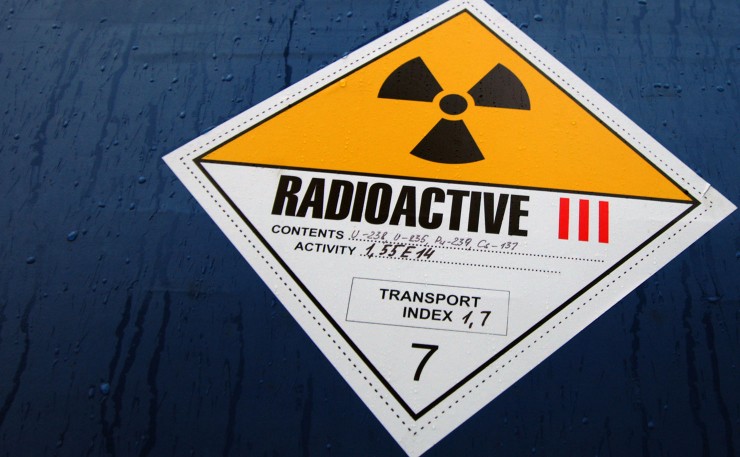The government is seeking to consolidate Australia’s waste but previous efforts to find a location have been barred by community opposition. Thom Mitchell reports.
The Federal government has outlined six potential sites to house Australia’s growing stockpile of low to intermediate nuclear waste, a shortlist which emerged after landowners across the nation were invited to volunteer their properties to house a national storage facility earlier this year.
The offer comes with a $10 million sweetener for the state or territory and local community that accepts the waste dump and Josh Frydenberg, the Minister for Resources, Energy, and Northern Australia, has promised to “ensure that the community in and around these properties is informed and engaged in this important project”.
The six sites Frydenberg named this morning include: Sally’s Flat, in New South Wales; Hale, in the Northern Territory; Cortlinye, Barndioota and Pinkawillinie, in South Australia; and Oman Ama, in Queensland.
“Australia currently has the equivalent of around two Olympic-sized swimming pools of such waste, which may include laboratory items such as paper, plastic and glassware, and material used in medical treatments,” Frydenberg said.
The newly minted minister took up the long-running quest of successive Federal governments to find a consolidated and permanent site for the waste dump when he was promoted by Prime Minister Malcolm Turnbull, and he said that “more than 100 sites across the country, including hospitals and universities, are [currently]licensed to store this waste on an interim basis”.
According to Frydenberg, 28 landowners had put their properties forward to house a consolidated dump and each “was subject to an objective and evidence-based assessment by the Department of Industry, Innovation and Science, with the assistance of an Independent Advisory Panel and Geoscience Australia”.
“The government has assessed the nominations against technical, economic, social and environment factors,” he said.
But the Greens spokesperson on nuclear, Scott Ludlam, has already flagged concerns that “the government is still asking the wrong question and risks getting the wrong answer again”.
While he recognised the Coalition has moved away from the more aggressive efforts of the previous Labor government to create a nuclear waste dump at Muckaty Station, Ludlam said that “instead of simply asking ‘which remote location is most suitable for dumping radioactive waste’, and leaving it at that, we should be engaged in much broader questions”.
“What is the most appropriate way of managing and isolating various categories of radioactive waste? When will Australia prioritise non-reactor production of medical isotopes and cease production of such intractable wastes altogether?”
“While the Government’s comments this morning have focused almost exclusively on the low-level materials arising from radioisotope production, the main game here and around the world is always the spent fuel and fuel reprocessing wastes, which must be safely isolated for tens of thousands of years,” he said.
It’s a debate Prime Minister Malcolm Turnbull stoked in October when he said Australia should “look closely” at expanding its role in the international nuclear energy industry, and that he saw potential for fuel rods to be leased to other countries and then returned for storage.
They’re the sorts of propositions a South Australian Royal Commission into the nuclear fuel cycle has been grappling with since it kicked off earlier this year, and the prospect of a vastly expanded nuclear industry has given fresh force to the key question of how and where to store waste products.
A long-time opponent of any such expansion, the Australian Conservation Fund’s nuclear campaigner Dave Sweeney said the “sorry history” of bungled attempts to find a location for the waste dump must not be repeated.
The Federal quest to find a permanent major waste dump dates back to 1980.
Various governments have led several investigations into establishing a national facility, but multiple sites have been abandoned due mostly to staunch community opposition.
The most recent controversy began in 2007, when the Northern Land Council suggested Muckaty Station, 120 kilometres from Tennant Creek in the Northern Territory, as a possible site.
After years of opposition from some Traditional Owners the plan was abandoned last year, a set-back which gave rise to the current government’s fresh attempts to secure a new location for the waste dump.
“The approaches of the past – secret deals, surprise announcements, emotively linking the separate issues of nuclear waste and nuclear medicine, commercial-in-confidence ‘agreements’ and the carrot and stick politics of division – have all failed,” Sweeney said.
“We should keep an open mind to how we manage radioactive waste and a closed door to undead and unwanted waste from other nations.”
In his statement announcing the new shortlist of six sites, Frydenberg said the government will “now engage in extensive consultation over the next 120 days with local stakeholders with an interest in the sites”.
“The outcomes and feedback of the consultation process will help inform the government’s consideration of the next phase of detailed assessment, which will involve a further shortlist of two to three sites with an expectation of a final site being identified before the end of next year,” he said.
“The facility will be designed, built and operated to the highest safety and environmental standards. This will require a thorough assessment by the Australian Radiation Protection and Nuclear Safety Agency, Australia’s independent radiation safety regulator, and an environmental assessment under the Environment Protection and Biodiversity Conservation Act.”
Donate To New Matilda
New Matilda is a small, independent media outlet. We survive through reader contributions, and never losing a lawsuit. If you got something from this article, giving something back helps us to continue speaking truth to power. Every little bit counts.





